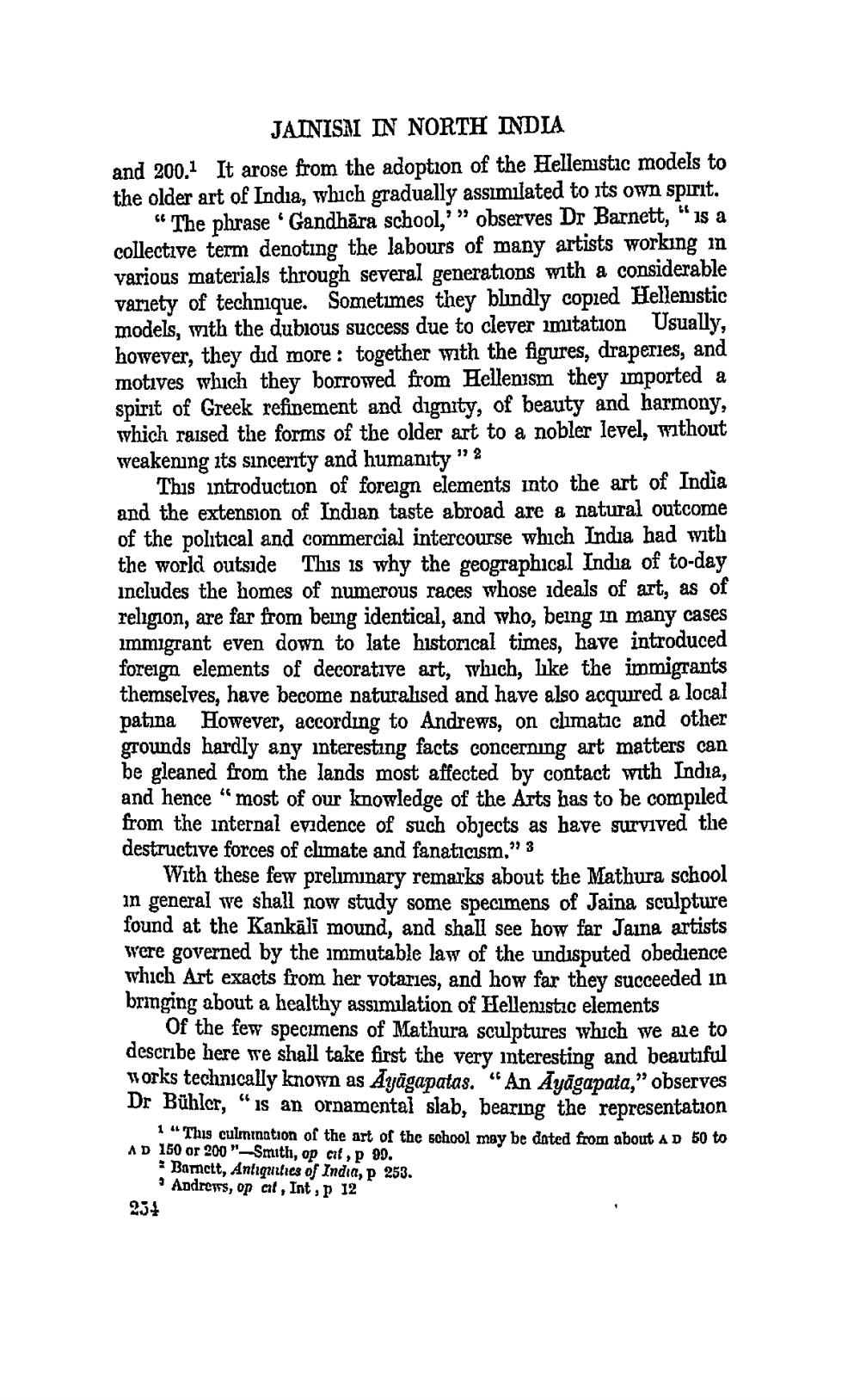________________ JAINISAI IN NORTH INDIA and 200.1 It arose from the adoption of the Hellenistic models to the older art of India, which gradually assimilated to its own spirit. "The phrase "Gandhara school," " observes Dr Barnett," is a collective term denoting the labours of many artists working in various materials through several generations with a considerable variety of technique. Sometimes they blindly copied Hellenistic models, with the dubious success due to clever mutation Usually, however, they did more: together with the figures, draperies, and motives which they borrowed from Hellenism they imported a spirit of Greek refinement and dignity, of beauty and harmony, which raised the forms of the older art to a nobler level, without weakening its sincerity and humanity" This introduction of foreign elements into the art of India and the extension of Indian taste abroad are a natural outcome of the political and commercial intercourse which India had with the world outside This is why the geographical India of to-day includes the homes of numerous races whose ideals of art, as of religion, are far from being identical, and who, being in many cases immigrant even down to late historical times, have introduced foreign elements of decorative art, which, like the immigrants themselves, have become naturalised and have also acquired a local patina However, according to Andrews, on climatic and other grounds hardly any interesting facts concerning art matters can be gleaned from the lands most affected by contact with India, and hence "most of our knowledge of the Arts has to be compiled from the internal evidence of such objects as have survived the destructive forces of climate and fanaticism." 3 With these few preliminary remarks about the Mathura school in general we shall now study some specimens of Jaina sculpture found at the Kankali mound, and shall see how far Jaina artists were governed by the immutable lay of the undisputed obedience which Art exacts from her votaries, and how far they succeeded in bringing about a healthy assimilation of Hellenistic elements of the few specimens of Mathura sculptures which we ale to describe here we shall take first the very interesting and beautiful works technically known as Ayagapatas. "An Ayagapata," observes Dr Buhler," is an ornamental slab, bearing the representation 1 "This culmination of the art of the school may be dated from about AD 50 to AD 150 or 200"-Smith, op cit, p 99. . Bamctt, Antiquifics of India, P 253. Andrews, op at , Int , p 12 23+




